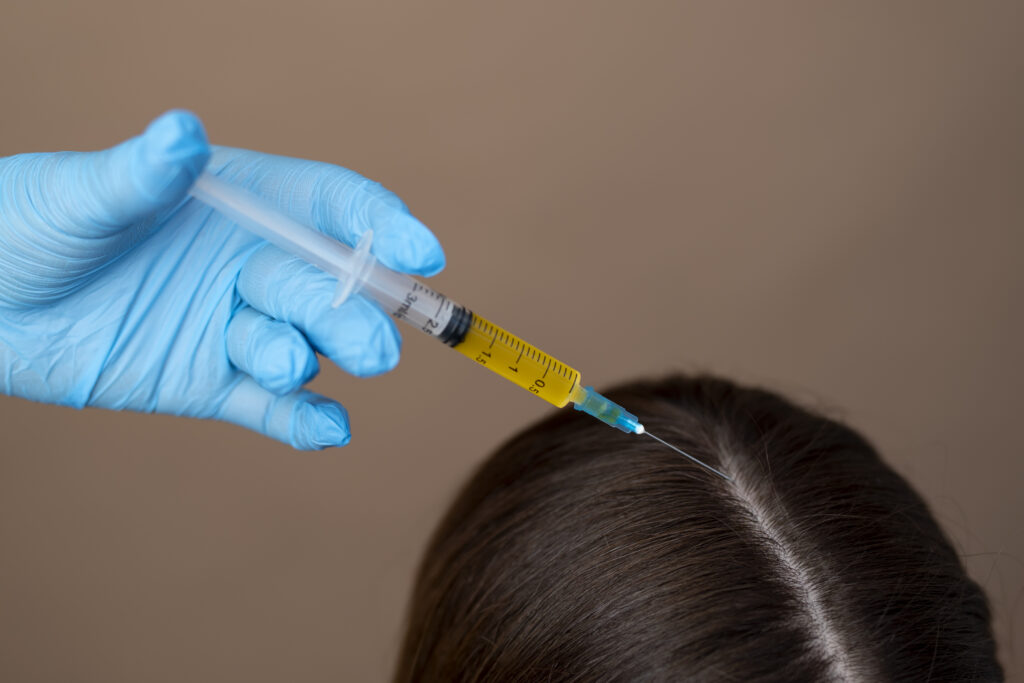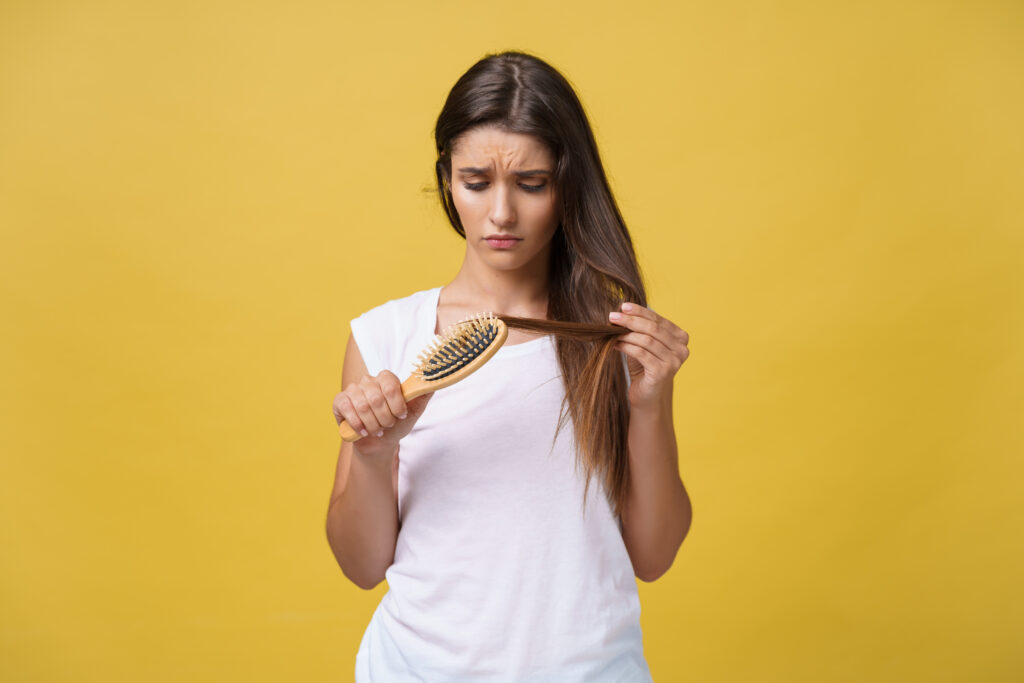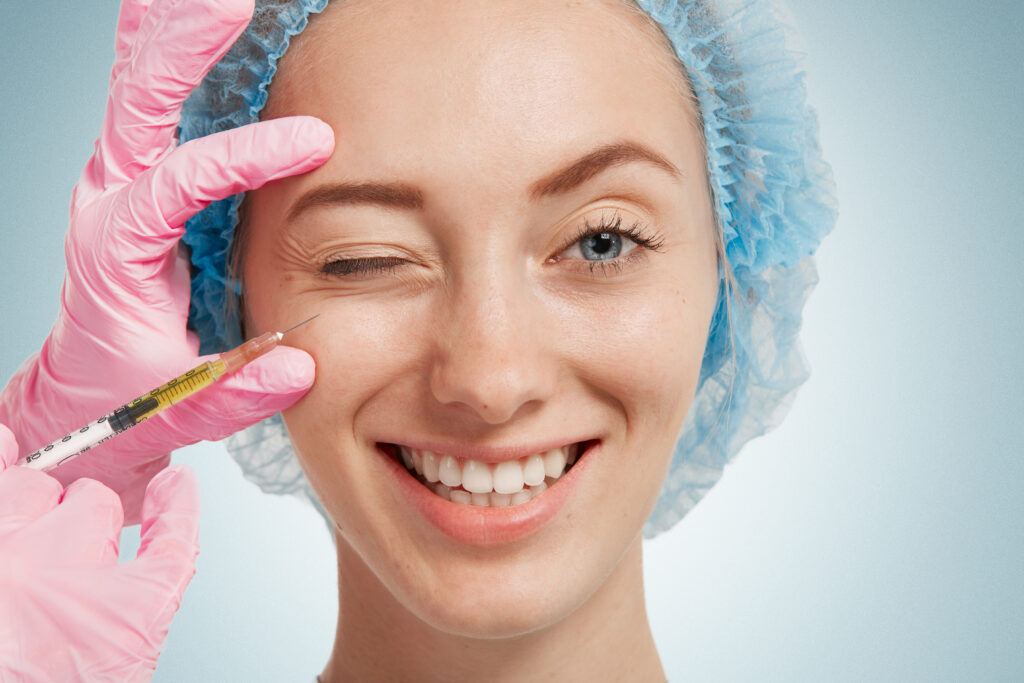PRP Therapy for Hair Loss

You may suffer from hair loss or weakness in your hair growth and would like to enhance new strong follicles and restore healthy hair. However, you don’t feel like doing cosmetic operations, so a hair transplant is not an option for you.
You don’t have to worry at all, PRP therapy, which is a completely safe treatment, can be your ideal alternative solution for strengthening your hair.
Table of contents
What is PRP for hair loss?
PRP therapy, which stands for Platelet-Rich-Plasma, is a revolutionary hair treatment that depends on the patient’s blood himself. PRP is derived from the blood using a device called “centrifuge” which separates it from other blood components, to be injected back in the scalp, specifically in the weak hair areas or the bald spots.
PRP includes specialized proteins, which are called growth factors, play a crucial role in treating hair loss and enhancing new hair follicles.

Who is a good candidate for PRP for hair loss?
PRP may not be an effective treatment for every patient. However, it could be a good option for you if:
- You are in good general health.
- You don’t suffer from certain health conditions, such as diabetes, heart and blood diseases, or skin problems.
- You are still in the early stages of hair loss, which means you have not experienced severe hair loss yet.
- You experience weak hair growth in certain areas of your scalp.
- You suffer from bald spots on your scalp.
PRP for hair loss pre-op Instructions
There are some important instructions the patient should follow before the treatment:
- You should stop smoking for three days before the procedure.
- You should avoid anti-inflammatory medications, such as Ibuprofen for three days before the treatment.
- You should stop blood-thinning medications or supplements, such as a multivitamin, Vitamin E/A, Fish Oil, and Aspirin a week before the procedure to avoid excessive bleeding during the treatment.
- You should avoid alcohol for three days prior to the treatment.
- You should stop caffeinated drinks, including tea and coffee for a week before the procedure.
- You should avoid coloring your hair for three days before the treatment.

How does PRP for hair loss work?
PRP therapy goes through the following stages:
- Sample blood draw: typically, the doctor draws a sample of your own blood from your arm.
- The drawn blood is spun at high speeds in a device called a “centrifuge” for almost 10 minutes. In this device, the PRP is separated from other blood components, which are platelet-poor-plasma and red blood cells.
- Local anesthesia: before PRP injection, the doctor applies local anesthesia on the patient’s scalp, which helps release any pain the patient may feel.
- PRP injection: after administering local anesthesia to the patient, PRP is injected into the scalp, specifically in the target areas using a microneedle.
- Typically, PRP therapy requires 3 courses each 6 months to maintain the results.
PRP for hair loss post-op Instructions
After PRP therapy, it is recommended to follow certain instructions which help you ensure the satisfying results you expect.
- Avoid taking anti-inflammatory medications, such as Ibuprofen and aspirin for a week after the treatment.
- Avoid alcohol for three days after the treatment.
- Avoid smoking for three days after the procedure.
- You can wash your hair the day after the treatment.
- You can wear a hat after your treatment immediately.
- Avoid vigorous exercise and sun exposure for three days at least after the procedure.
- Stay away from swimming for two days after the treatment.
- Avoid caffeinated beverages for three days after the procedure.
- Avoid using blood-thinning medications or supplements for a week after the treatment.
